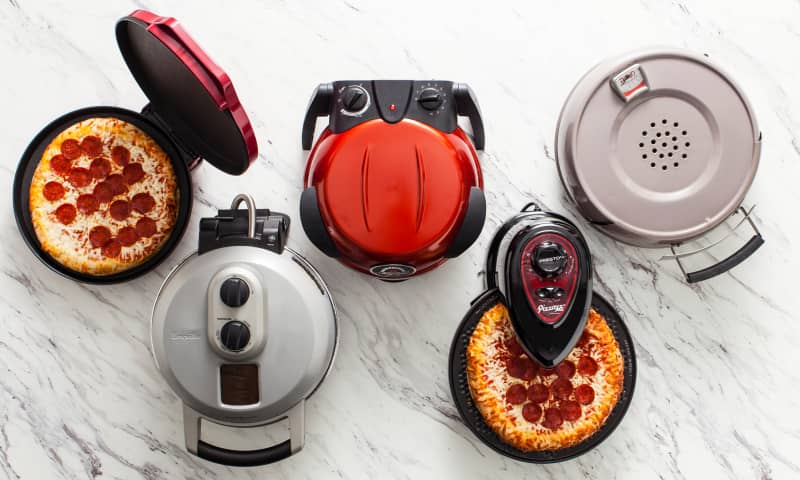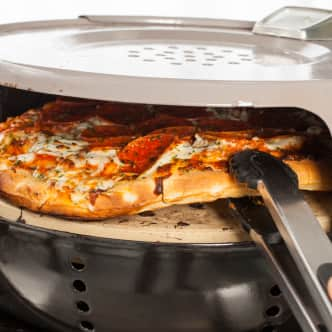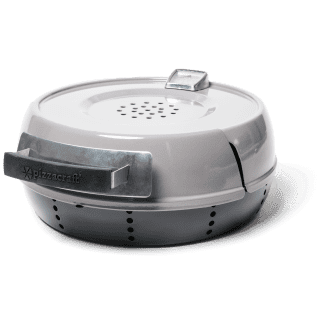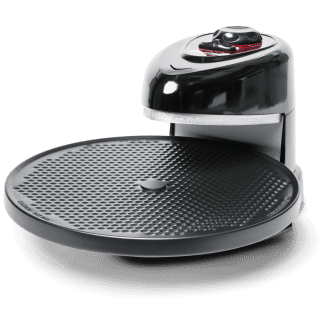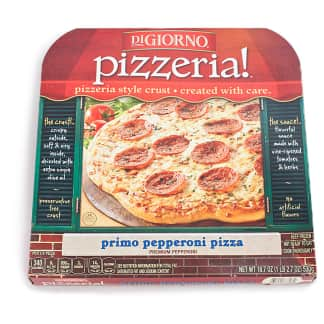We love making pizza, but it can be challenging to get good results at home. Restaurants often have special ovens that reach upwards of 800 degrees, cooking the dough and toppings quickly and producing pizzas with crisp, golden-brown crusts and chewy interiors. To approximate that high heat at home, we crank the oven to 500 degrees and preheat a baking stone for a full hour so it becomes saturated with heat that it will transfer to the dough. Meanwhile, heat reflects off the top of the oven and cooks the toppings. It works beautifully, but we’re always on the lookout for quicker, easier methods. We were intrigued by indoor pizza ovens, midsize countertop appliances that minimize the preheating time and can reach higher temperatures than conventional home ovens.
We purchased five models, priced from $34.52 to $169.99, including four electric ovens and one that works on a gas stovetop. We churned out dozens of pizzas, including a variety of homemade doughs and store-bought frozen pizzas, and evaluated the quality of the finished pies. For comparison, we held blind tastings of pizzas baked in the indoor pizza ovens, comparing them with each other and with identical pizzas prepared in a conventional oven according to recipe or package instructions. Throughout, we timed how long the pizza ovens took to preheat and cook, rated how easy it was to unload and remove pizzas, and assessed each product’s overall design.
